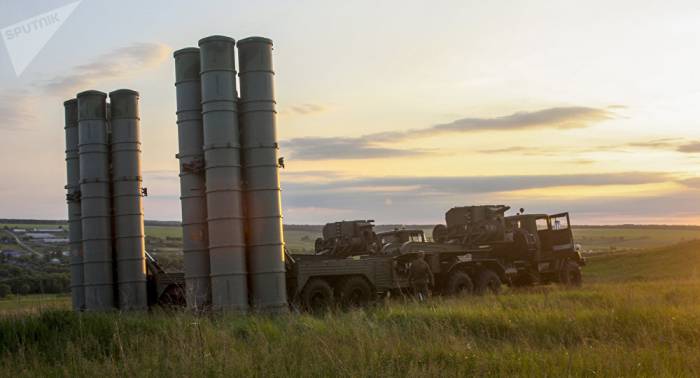Can Work in Conjunction With Other S-300s
Each S-300 (NATO reporting name SA-10 Grumble) can operate in various modes with up to 11 other missile systems, even if they are of different modifications. Normally an S-300 division consists of 12 vehicles, with one of them serving as a command post, which designates targets to the other 11 S-300s.
This command post may receive tasks and even telemetry from early detection stations and use this information to fulfill combat tasks. At the same time, each S-300 is self-sufficient and may operate on its own or, for example, as a pair by triangulating the position of enemy aircraft within seconds, thus ignoring most counter measures.
Advanced Radar and Target Acquisition Systems
The S-300 can detect and target enemy aircraft and other airborne objects in a cone-shaped field of view ranging from 60 to 90 degrees, depending on the modification. Each S-300 can lock on up to 6 targets and control up to 12 missiles, meaning that it can fire at least 2 missiles at each of target. Older modifications can shoot down targets at 4 Mach (speeds of sound), but the most modern can cope with 8,5 Mach.
What is more, its radar systems can "cooperate," meaning that even tricky and evasive targets can still be detected and acquired, as command posts can combine partial radar readings from several S-300s in the division into solid data on the position of enemy aircraft.
Can Hide Anywhere and Still Be Able to Quickly Shoot Down Targets
The S-300 launching system vertically "spits out" its missiles to a height of 50 meters and only then do the rocket engines start and propel it in the necessary direction. This gives the Russian air defense system several advantages.
For starters, it can be placed literally anywhere — between buildings, tight canyons, deep forests, making it immune or just invisible to the enemy until it is too late. None of these conditions restrict its operational efficiency due to its unusual launching system.
Secondly, it can shoot in any direction and hit both ballistic and low flying objects with high efficiency. But what is more important is that it allows to shoot targets coming from different directions without reducing its rapid 3 second rate of fire — the S-300 doesn't need to turn its launching system in the direction of the target since it fires vertically. This prevents targets from eluding air defenses by approaching from unexpected angles.
Sputnik
More about: S-300
















































